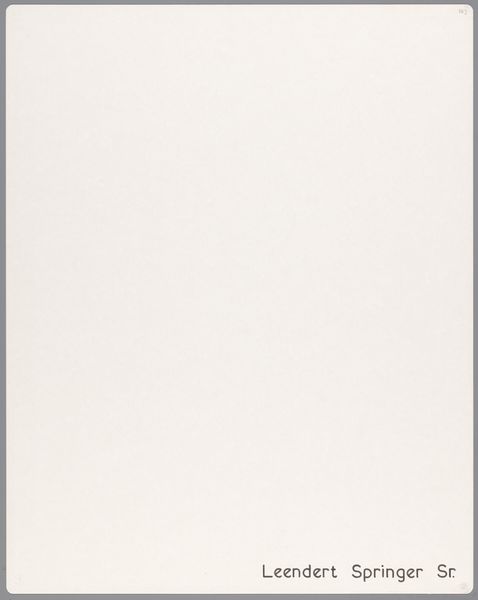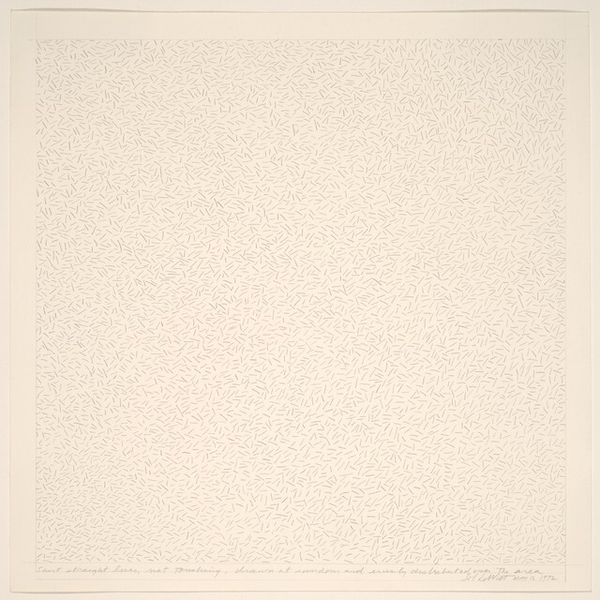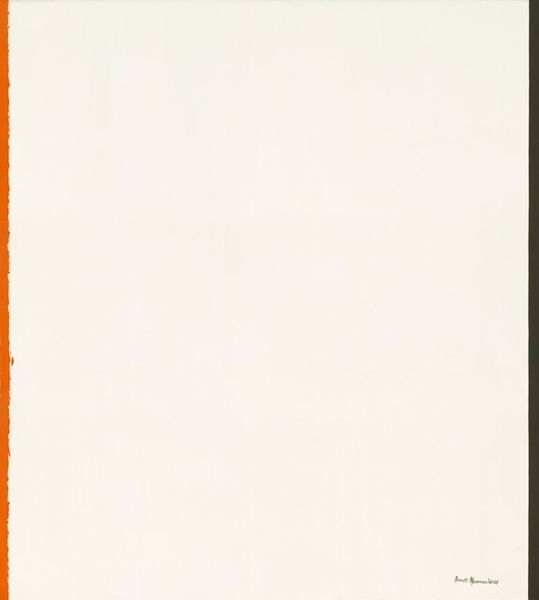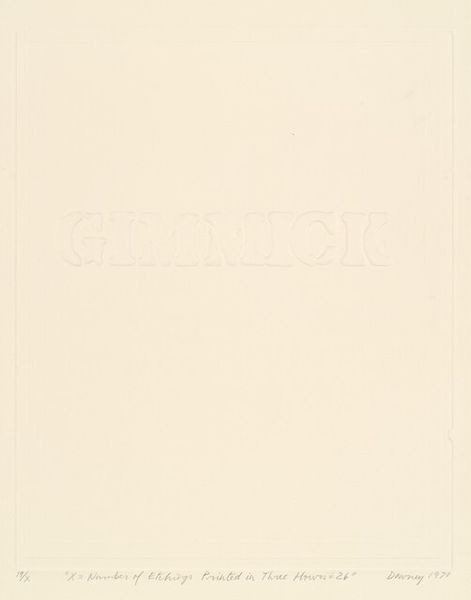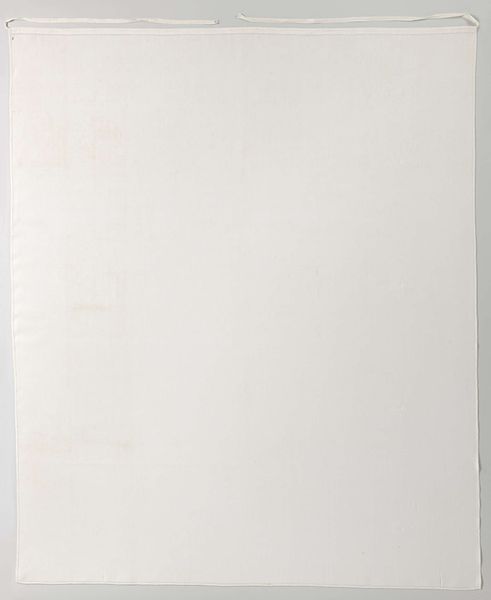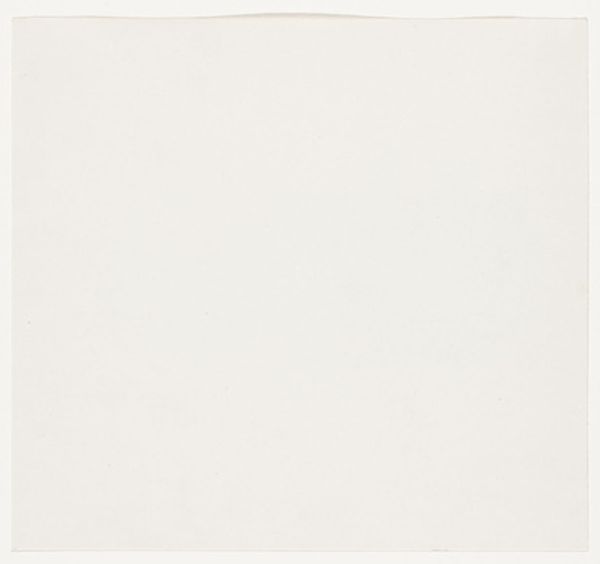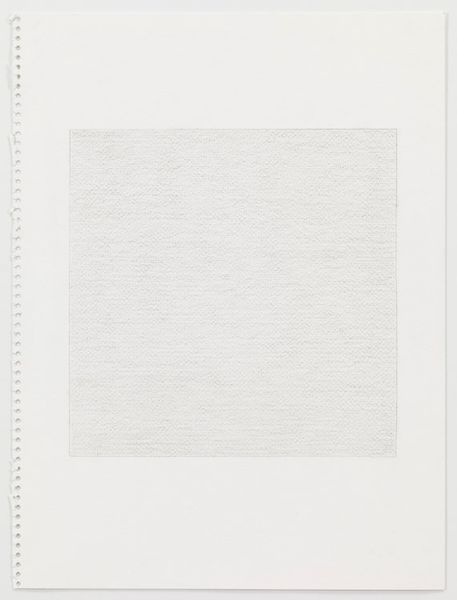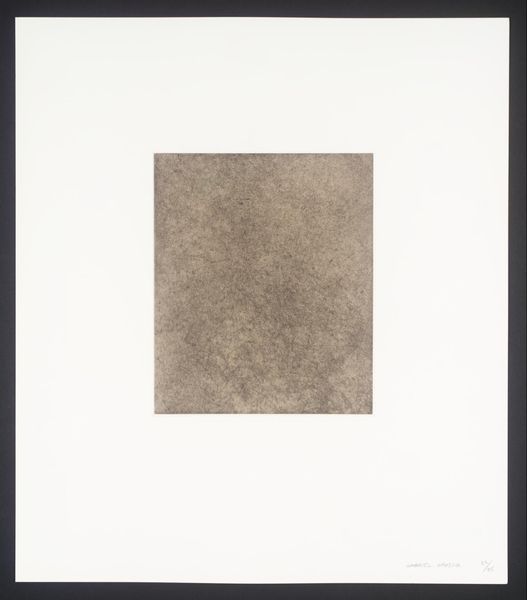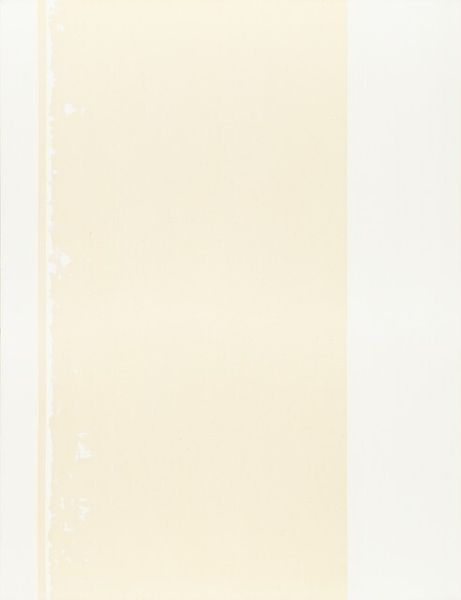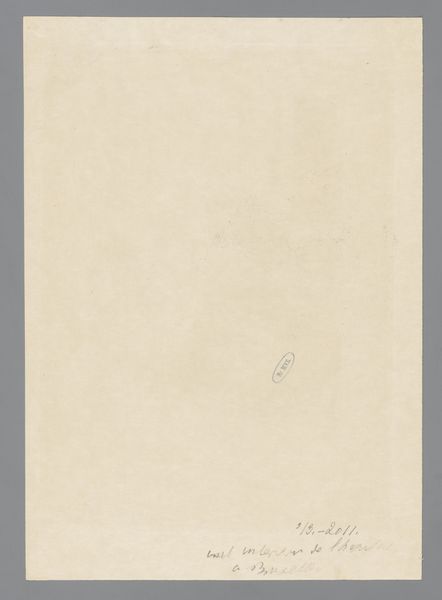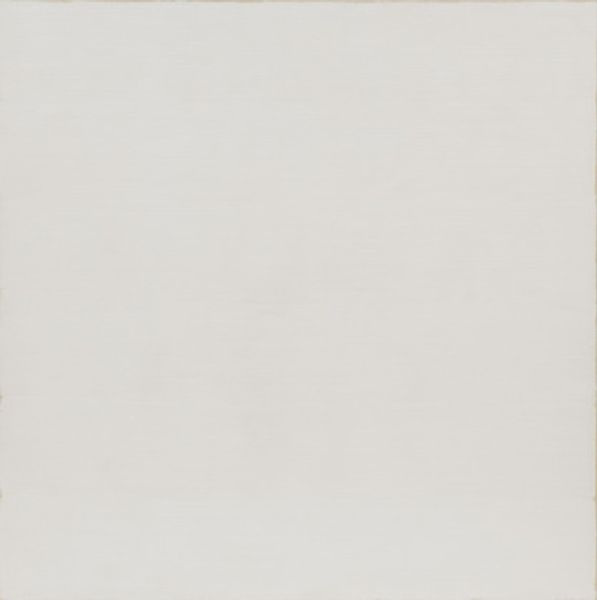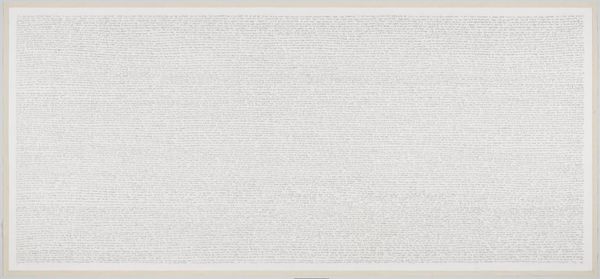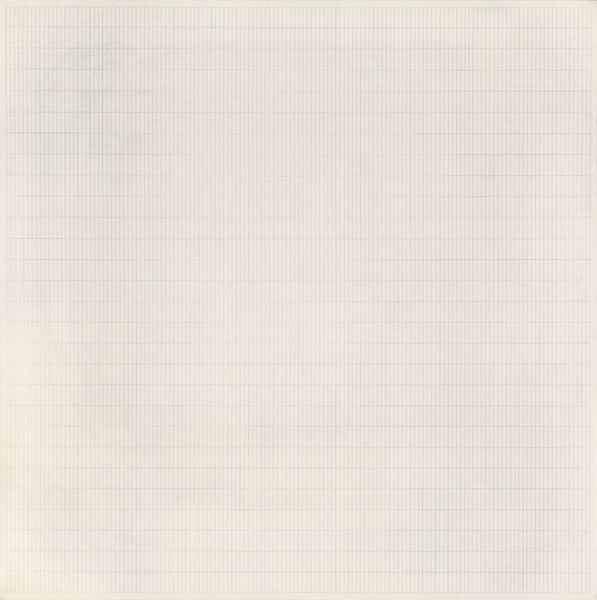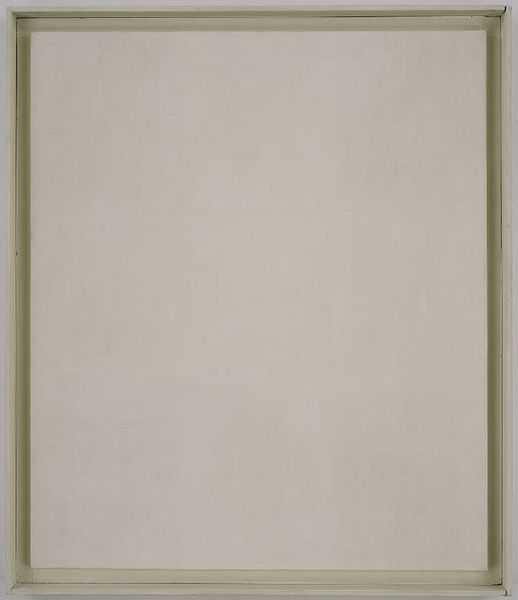
#
minimalism
#
text
#
geometric
#
abstraction
#
line
#
hard-edge-painting
Copyright: Robert Mangold,Fair Use
Editor: This immediately strikes me as an exploration of the sublime. Such restrained execution yields so much…quiet power, if you will. Curator: I see that. The work, created in 1969 by Robert Mangold, is titled “104" Perimeter Series." What’s compelling is the moment, 1969— the civil rights movement is roiling, anti-war protests peak, feminism’s second wave gains force and momentum, and you get this deeply reduced, quiet perimeter. Editor: Precisely! Let’s delve into that quiet. Look at the precision of that thin line. The interplay between the ruled rectangle and the subtle texture of the canvas creates an optical vibration. He forces us to contemplate the void, to see its fullness. Curator: In that way, Mangold’s minimalism reflects the late 60s emphasis on challenging norms around identity and questioning structures of power. By minimizing formal elements, he invites us to fill that quiet with our own reflections on the social landscape. Editor: And he asks us to question our assumptions about the essential qualities of art itself. Is it about grand narratives, heroic gestures? Or can it be found in the subtle tension between a line and the space it defines? It almost becomes an existential question about painting’s limits. Curator: He seems to present an argument through negative space: by erasing expectations he calls on his viewers to confront their personal investments and experiences. His simple act of boundary marking reflects those movements, which all fought to create more conceptual room for more voices to fill previously rigid spaces. Editor: Indeed. Looking closely, one appreciates Mangold’s precise registration. Those even expanses! One can see the historical precedent of Mondrian, but then observe the reduction into pure surface, and then also feel the looming presence of what art can do. Curator: Art becomes activism, a conceptual space for challenging assumptions—not just of aesthetic expectation but societal limitations too. It’s that period's radical reimagining, crystallized into an image. Editor: Looking once more into the work’s open surface I’m struck at how this piece is as much about being, as it is seeing. Curator: Yes. It prompts introspection and interrogation as a space for discourse about presence and form.
Comments
No comments
Be the first to comment and join the conversation on the ultimate creative platform.
